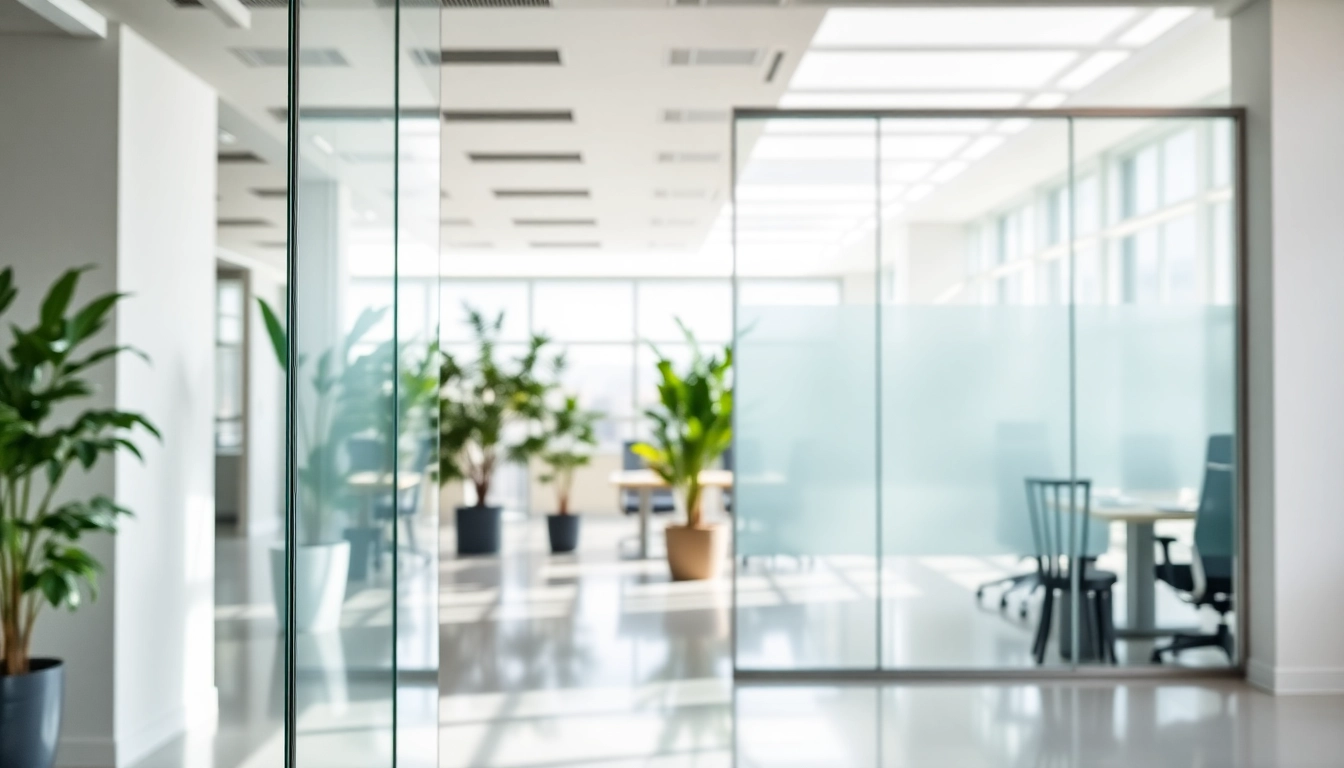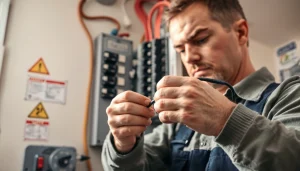Elevate Your Space with Movable Glass Partitions for Modern Work Environments
Understanding Movable Glass Partitions
What Are Movable Glass Partitions?
Movable glass partitions are innovative wall systems designed to create flexible spaces while allowing natural light to flow through. Constructed from high-quality tempered glass, these partitions can be easily slid, folded, or stacked to transform a room’s layout. They play a key role in modern architecture, enabling individuals to adapt interior spaces based on their needs—whether for privacy in a corporate setting or open areas in homes for social gatherings. As a versatile solution, movable glass partitions enhance utilization of space in both commercial and residential applications.
Benefits of Using Movable Glass Partitions
The advantages of movable glass partitions extend far beyond aesthetics. Here are some significant benefits:
- Space Optimization: Easily reconfigurable, these partitions allow for dynamic space utilization, transforming large areas into smaller, functional zones or vice versa.
- Increased Natural Light: They foster a brighter environment by letting natural light penetrate deeper into spaces, improving mood and productivity.
- Sound Control: Advanced designs incorporate soundproofing technology, ensuring that noise levels remain manageable and privacy is maintained.
- Design Versatility: Available in a variety of glass types, finishes, and configurations, they can be customized to fit any aesthetic while maintaining functionality.
- Improved Aesthetics: Movable partitions provide a sleek, modern look, elevating the overall design of an interior space.
Key Features to Look For
When selecting movable glass partitions, consider the following key features:
- Frame Options: Decide between framed, semi-framed, or frameless designs based on your visual preference and functional requirements.
- Sound Ratings: Select partitions with appropriate sound transmission ratings (STC) if sound control is a priority.
- Operation Mechanism: Choose between sliding, folding, or stacking options based on the space and required accessibility.
- Safety Features: Ensure that partitions adhere to safety standards, including laminated or tempered glass for durability.
- Finishes: Options in glass tint, color, and texture can enhance the visual impact of the partitions.
Applications of Movable Glass Partitions
Commercial Spaces
Movable glass partitions are extensively utilized in corporate offices, hotels, and retail spaces due to their flexibility and contemporary appeal. In offices, they facilitate open-concept designs while allowing for private meeting areas, thus enhancing collaboration and productivity. Hotels often use these partitions for event spaces, enabling the conversion from large conference rooms to smaller venues for banquets or meetings.
Residential Uses
In residential settings, movable glass partitions can effectively separate living spaces without sacrificing light or openness. Homeowners may install them to partition a home office from a living area, or to create privacy in an open-plan design. Additionally, they can be particularly useful for creating outdoor-indoor transitions, enhancing the flow from living rooms to patios.
Educational Institutions
Schools and universities have also begun to adopt movable glass partitions for their adaptability in classroom configurations. By allowing teachers to easily modify classroom sizes based on learning styles or group activities, these partitions contribute to a more dynamic educational environment, accommodating various interactive and collaborative teaching methods.
Design and Aesthetic Considerations
Integrating Movable Glass Partitions into Your Design
When incorporating movable glass partitions into your space, it is crucial to maintain a cohesive interior design. Consider architectural elements, color palettes, and existing decor to ensure that the glass partitions enhance rather than detract from the overall aesthetic. Strategic placement is key; for example, align partitions with natural lighting sources to maximize visual appeal and ambiance.
Customization Options Available
Many manufacturers offer high levels of customization for movable glass partitions. From bespoke sizing to unique glass finishes and operational mechanisms, clients can tailor their partitions to meet specific needs and design preferences. This also includes options for integrated technology such as smart glass that can switch from transparent to opaque with the flick of a switch, adding an extra layer of functionality.
Color and Texture Choices
Glass partitions are available in a variety of colors, textures, and tints. Popular choices include frosted glass for subtle privacy solutions or clear glass for a more open aesthetic. Additionally, the use of patterns or etchings can be employed to add a decorative element or incorporate branding into the partitions, seamlessly blending functionality with design.
Installation and Maintenance of Movable Glass Partitions
Steps for Professional Installation
The installation of movable glass partitions should ideally be executed by professionals to ensure the best results. Key steps in the installation process generally include:
- Site Assessment: Evaluating the space to determine the most effective configuration and type of partitions needed.
- Preparation: Preparing the site through any required construction or structural adjustments to support the partition system.
- Installation: Carefully placing and securing the partitions following manufacturer instructions.
- Final Adjustments: Ensuring smooth operation of sliding or folding mechanisms and checking for sound insulation capabilities.
Maintenance Best Practices
Maintaining movable glass partitions is essential to prolonging their durability and aesthetic appeal. Regular cleaning with appropriate products is necessary to avoid streaks and smudges. Additionally, periodic checks on the hardware and moving parts can help prevent wear and tear. Implementing a maintenance schedule that includes lubrication of tracks and inspections for any visible damage can ensure longevity.
Cost Considerations and Budgeting
The cost of movable glass partitions can vary widely depending on factors such as size, design complexity, materials, and installation services. Budget considerations should include not only the purchase price but also installation fees and ongoing maintenance costs. It’s advisable to obtain quotes from multiple suppliers to get a comprehensive view of potential expenses and assess overall value based on longevity and performance.
Trends in Movable Glass Partition Systems
Innovations in Glass Partition Technology
The field of movable glass partitions is continually evolving, with technological innovations leading the way. Current trends include the integration of smart features, such as electronic tinting for privacy on demand, and energy-efficient materials that help in thermal insulation without sacrificing natural light. These innovations aim to adapt to the increasing demand for flexible and sustainable design solutions.
Sustainable Practices in Production
As sustainability becomes a priority across industries, manufacturers of movable glass partitions are adopting eco-friendly practices in their production processes. This includes using recycled materials, minimizing waste, and implementing energy-efficient manufacturing techniques. Consumers are encouraged to inquire about the sustainability practices of their chosen manufacturers to support environmentally conscious decisions.
Future Predictions for Movable Glass Solutions
The future of movable glass solutions appears promising, driven by a growing emphasis on adaptability and sustainability in design. As workplaces and homes continue to embrace more fluid and open concepts, the demand for movable partitions is expected to rise. Innovations in materials and technologies, combined with increased customization options, will likely offer new possibilities for designing spaces that meet the changing needs of users. Manufacturers poised to adapt to these trends are likely to lead the industry into a new era of design flexibility.



